#1947 partition
Link
Here’s the link to the 19|47 Partition Archive: https://www.1947partitionarchive.org/
#Ms. Marvel#ms marvel#Kamala Khan#India#Pakistan#PBS Origins#India and Pakistan#Partition#1947 Partition
2 notes
·
View notes
Text
On India’s 2nd museum commemorating the 1947 Partition of South Asia
Delhi, the refugee city, got its first museum to recognise its turbulent history in 1947 Partition. I took a guided tour with the museum’s founder and found resonance with my own Partition-migrant family, my city, and the pop-culture i grew on
0 notes
Text
Memories of Partition in Shimla
The temperature had dropped over the past few days. It was early January, and people were awaiting the first snowfall of the year. We made our way down the steep roads of Jakhu Hill and noticed the grey clouds hovering over Shimla. The shivering cold and grave atmosphere almost harkened back 78 years into the past, when Shimla was the seat of a fateful decision for the partition that took a toll…

View On WordPress
#1947 partition#hills#history#indian history#indian institute of advanced study shimla#Mountains#shimla#shimla partition
0 notes
Text
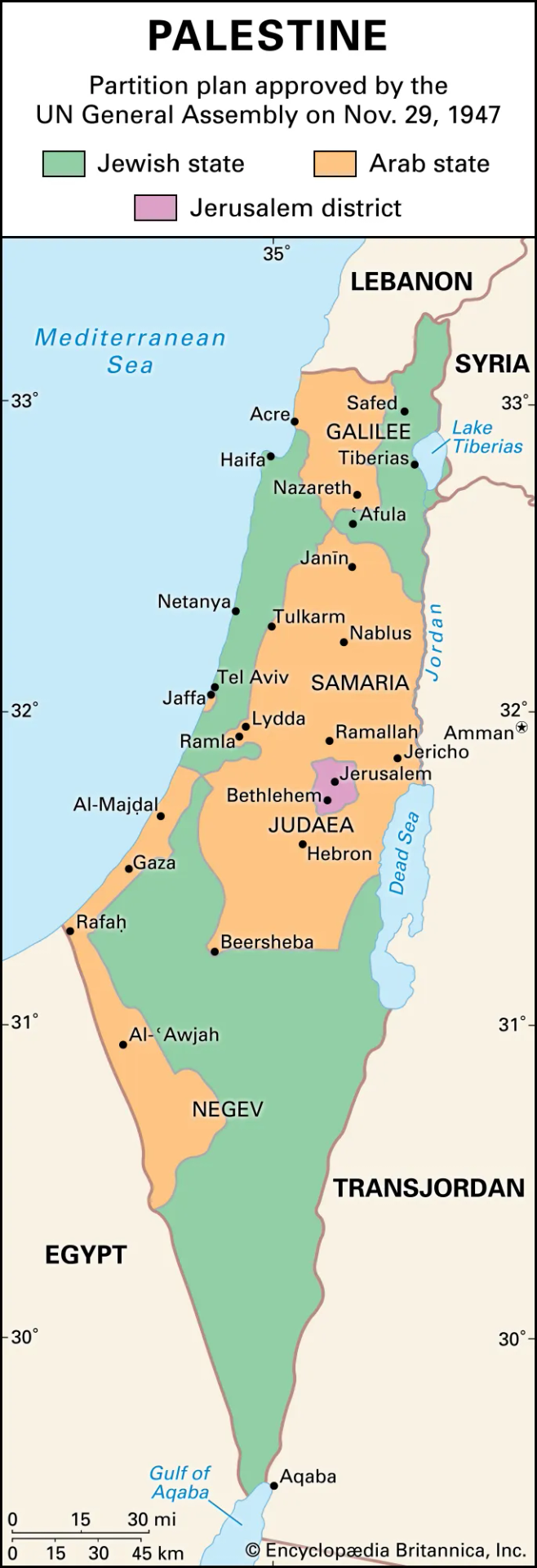
[ID: Map of the partition plan approved by the UN general assembly on November 29, 1947. It marks the "Jewish state" in green (all the border to the east with Syria, much of the south and the inland west including the southern half of the Dead Sea; and most of the northern coastline with the Mediterranean Sea) and the "Arab state" in orange (a strip on the western border with Egypt and southern part of the border with the Mediterranean, including Rafah and Gaza; and the mostly inland north including the area where the Jordan flows into the Dead Sea. In purple the "Jerusalem district" in the center of the country is marked. End ID]
But how fair, balanced, pragmatic, and practicable was the UN 1947 partition plan itself? In gross terms, the partition resolution awarded 55.5 percent of the total area of Palestine to the Jews (most of whom were recent immigrants) who constituted less than a third of the population and who owned less than 7 percent of the land. The Palestinians, on the other hand, who made up over two thirds of the population and who owned the vast bulk of the land, were awarded 45.5 percent of the country of which they had enjoyed continuous possession for centuries.
Looking at the situation in greater detail, Palestine was a country of 27 million dunams (4 dunams = 1 acre). Its population in December 1946 was just under 2 million (1,972,000): 1,364,000 Palestinians and 608,000 Jews. The partition plan divided the country into eight sections: three Jewish, three Palestinian, an international enclave (corpus separatum) including municipal Jerusalem and the surrounding villages, and an enclave for Jaffa that would be part of the Palestinian state, albeit completely surrounded by the Jewish state [...].
At the time, one of the arguments frequently raised by the Jews against a unitary state in Palestine had been the unfairness of Arab majoritarian rule over the Jewish minority. Commenting on this argument, the Pakistani delegate at the UN, Muhammad Zafrulla Khan, remarked: "If it is unfair that 33 percent of the population of Palestine [the Jews in the proposed unitary state] should be subject to 67 percent of the population, is it less unfair that 46 percent of the population [the Arabs in the proposed Jewish state] should be subject to 54 percent?" [...]
In terms of land ownership, despite over seventy years of intensive, centrally organized and internationally financed colonization since the early 1880s, Jewish-owned land on the eve of the partition resolution amounted, according to Jewish sources, to 1,820,000 dunams, or less than 7 percent of the total land area of the country. Now, at the bang of his gavel [...], the president of the UNGA [...] "awarded" the Jews 15,000,000 dunams for the Jewish state. Within the borders of this state, Jewish-owned land at its most inflated estimate amounted to 1,678,000 dunams, or 11.2 percent. [...]
But it was not only the extent of the land allotted to the Jewish state that was at issue. The best lands were incorporated within it—most of the fertile coastal plains (from Jaffa to Haifa) and all the interior plains (from Haifa to Baysan and Tiberias). These included almost all the citrus and cereal producing areas. Half of the former and the vast bulk of the latter were owned by Palestinians. Citrus was the main export crop of the country, accounting before World War II for 80 percent of the total value of exports. [...] As if this were not enough, a full 40 percent of Palestinian industry and the major sources of the country's electrical supply fell within the envisaged Jewish state.
[...] Jaffa [...], the historical Palestinian port and vibrant center of Palestinian cultural and social life, was not only confined within its municipal borders, with no living space for any growth or development, but was also cut off from the orange groves that bore its name and were its principal source of economic livelihood. Haifa—the main port of Palestine, the terminal of the oil pipeline from Iraq, the petroleum depot for the entire country, seat of the most active entrepreneurial sectors of Palestinian society [...]—fell squarely within the Jewish state. Many of the other major Arab towns included in the Palestinian state [...] were left just inside its borders but without their most fertile lands or economic hinterlands. The upper reaches of the Jordan River, and therefore control of the major source of riverine water supply to the Palestinian state, were vested in the Jewish state. The whole of Lake Tiberias and its rich fishing industry, traditionally in Palestinian hands, was incorporated within the Jewish state. The bulk of the Palestinian state, restricted to the central highlands, was landlocked with no direct access to the Red Sea southward or the Mediterranean westward. Its two other coastal towns (apart from isolated Jaffa) had no harbors or port facilities. The only airport (near Lydda) in the country with international connections went to the Jewish state, leaving the Palestinian state with no air access either.
– 1997. Walid Khalidi, “Revisiting the UNGA Partition Resolution,” Journal of Palestine Studies 27.1, pp. 5-21.
717 notes
·
View notes
Text
This from a narrative of a South Asian.
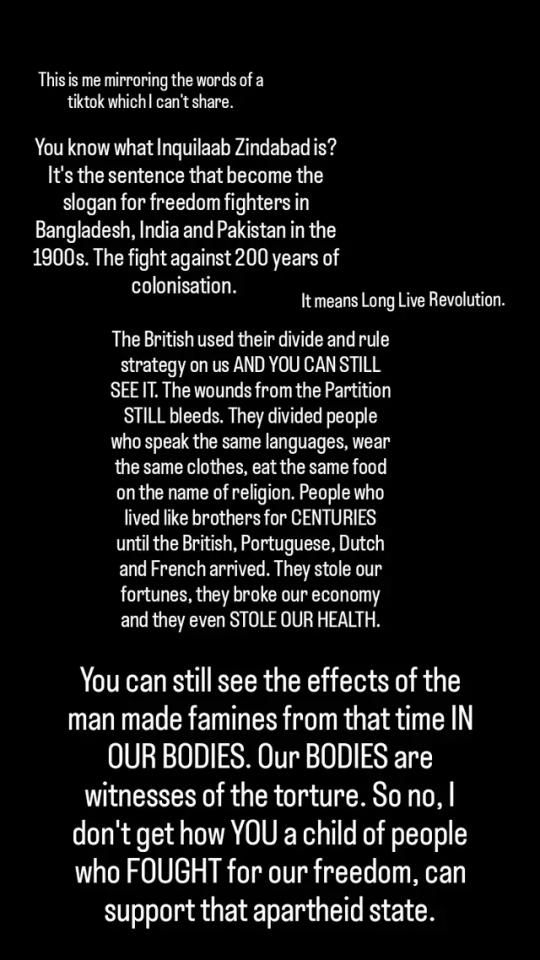
#south asia#desiblr#desi blog#bangladesh#india#pakistan#desiblogger#palestine#free palestine#from the river to the sea palestine will be free#pro palestine#anti israel#anti zionisim#jewsforpalestine#muslimsforpalestine#humansforpalestine#partition#1947#the partition#india 1947#inquilaab zindabad#israel
106 notes
·
View notes
Text
Y'all must read the play "Final Solutions" by Mahesh Dattani.
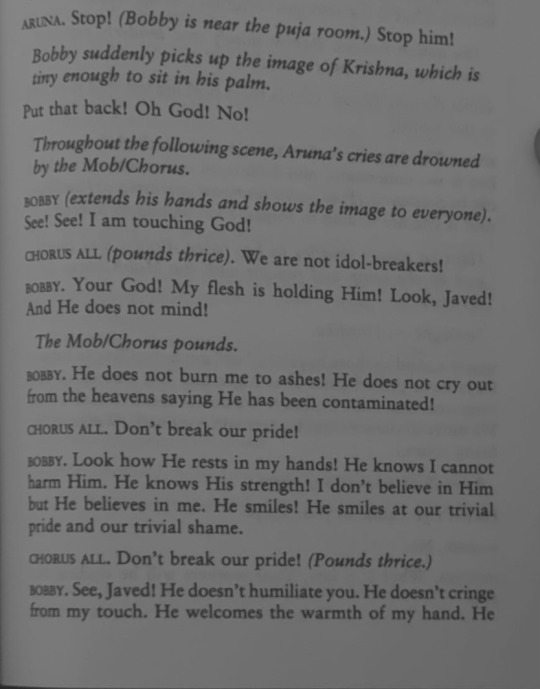
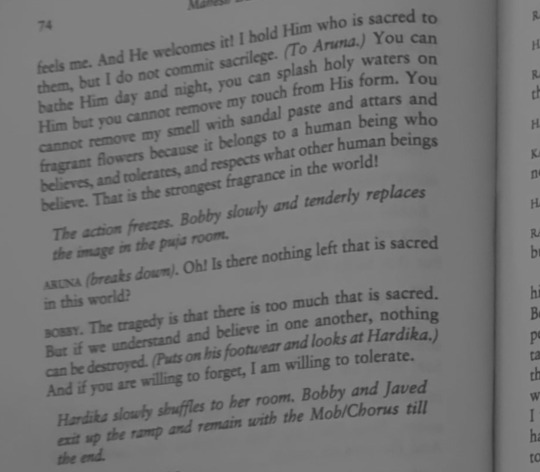
1947 is identified as the year that India and Pakistan gained independence from British Colonial rule. It is also the year that saw the formation of two separate states from one nation. One, Pakistan, was apparently founded on a theocratic principle and the other, India, founded apparently on principles of democracy and secularism. While the political establishment was celebrating the achievement of Independence and the formation of sovereign states, ordinary citizens were reeling from the shock of neighbours turning on each other and the dislocations where many were uprooted from the homes their families had lived in for generations. Although there have been several literary representations of the violence, of this traumatic severing of countries on religious and ethnic lines, there has been very little attempt in literature to link what is now obvious to most sociologists and even to the layman. Namely, communal tensions and fault lines in contemporary India have their origins in the trauma of partition as well as the lack of resolution or forgiveness. Mahesh Dattani’s play ‘Final Solutions’ is a rare literary/dramatic text that connects our contemporary context with the unforgiven trauma of 1947. This play places a modern liberal family in the middle of a communal riot—while two Muslim men seek sanctuary from the fundamentalist Hindu mob baying for their blood outside the house, inside the Hindu family must face their own demons—of the past as well as the present.
#desiblr#india#hinduism#islam#ram mandir#ayodhya#pakistan#circa 1947#partition#indian culture#independence#desi#religion#communalism#indian literature
17 notes
·
View notes
Text


The Ethnic Cleansing of Palestine - Ilan Pappé (2006)
#Haifa#Benny Morris#revisionist historian#1947#UN Partition Resolution#Irgun#Hagana#Hashahar#mistarvim#Dani Agmon#Palmach#The Ethnic Cleansing of Palestine#Ilan Pappé#Ilan Pappe#Palestine#Palestinians#free palestine#israel#zionism#cw genocide#cw violence#ideology#nonfiction#colonialism#atypicalreads#ethnic cleansing#politics#history#state of israel
9 notes
·
View notes
Text
Khushwant Singh 🖋

" Morality is a matter of money . Poor people cannot afford to have morals . So they have religion. "
#khushwant singh#pakistan#india#partition 1947#independence#writer#quotes#poems and quotes#politicians#diplomat#author#poetry
8 notes
·
View notes
Text
This pattern holds across many of the conventional wars since World War II: a conflict over territory and power balance that began with the declaration of those modern states and that has flared intermittently ever since.
Armenia and Azerbaijan, for instance, two countries that also emerged out of the Soviet Union’s breakup, have fought periodic wars ever since, broken by long but tense cease-fires. India and Pakistan fought their first war within months of their independence and partition in 1947, followed by three more wars, most recently in 1999, and repeated lower-level conflicts now held at a tentative nuclear peace. North and South Korea reached an armistice in 1953 but remain in a technical state of war with occasional flare-ups and an ever-present threat of all-out fighting.
Such conflicts, in other words, have often persisted for as many as six or seven decades. With peace talks minimal or nonexistent in many cases, some may well continue longer than that.
And while outright fighting may be infrequent, with what Dr. Radchenko termed “active phases” lasting only a few months, periods of calm typically require deep international involvement to maintain. American troops, for instance, have been garrisoned in South Korea for more than 70 years.
It is impossible to predict whether this represents the future for Russia and Ukraine, though it perhaps already describes their present state. The seven years before Russia’s 2022 invasion were marked by lower-level fighting, with heavy Western diplomacy and support to Ukraine aimed at forestalling wider conflict.
This pattern shows that one side rarely vanquishes the other outright, especially with foreign states ready to step in. And it offers another lesson: Political change within those countries rarely provides the sort of breakthrough that observers are hoping might one day lead Moscow to pull back. The decade-long Soviet invasion of Afghanistan, for instance, only deepened with the elevation, in 1985, of the reform-minded leader Mikhail Gorbachev.
— What 70 Years of War Can Tell Us About the Russia-Ukraine Conflict
#max fisher#what 70 years of war can tell us about the russia-ukraine conflict#current events#history#military history#warfare#philosophy#philosophy of war#politics#international relations#russo-ukrainian war#2022 russian invasion of ukraine#nagorno-karabakh conflict#partition of india#indo-pakistani war of 1947-1948#kargil war#korean war#korean armistice agreement#russia#ukraine#sergey radchenko
2 notes
·
View notes
Text

1 note
·
View note
Text
14 août : l'invention du Pakistan il y a 75 ans
Le jour de l’Indépendance (یوم استقلال) est férié, il débute par un lever de drapeau au Parlement, les discours télévisés du président et du premier ministre, puis par la relève de la garde au mausolée de Mohammed Ali Jinnah, le père de la nation pakistanaise.
Le drapeau national est partout, jusque dans l’habillement vert et blanc que certains citoyens s’appliquent à arborer en ce jour de fête nationale qui est l’anniversaire de l’indépendance de 1947. Celle-ci permit à la fois de chasser les Anglais et, au nom de l’islam, de se séparer de l’Inde (laquelle fête l’événement le 15 août).
Cet après-midi sera l’occasion de faire voler des cerfs-volants en famille. Ce soir, on fera brûler des bougies dans les rues. À Lahore, la journée se terminera par un feu d’artifice. Une journée de fête qui permet d’oublier pendant quelques heures les problèmes du pays, ses contradictions identitaires, sa mauvaise image internationale, notamment en raison du soutien pakistanais apporté ces dernières années aux talibans afghans... un soutien qui aujourd’hui se retourne contre lui.
Mohammed Ali Jinnah a milité contre le colonialisme anglais aux côtés des hindous. Mais, dans les États indiens sous tutelle britannique, les musulmans étaient souvent perçus par les hindous comme des intrus et traités comme des citoyens de seconde zone. D’où l’idée de leur inventer un État séparé. Au grand dam de Gandhi et Nehru, Jinnah a fini, en 1939 par se rallier à cette idée en cherchant appui auprès de Londres qui, en 1947, parrainera la partition de son ancien empire. A-t-il réussi son pari ? Au Pakistan, il est désigné comme le père de la nation pour avoir œuvré à la création du pays. Mais sur le demi-milliard de musulmans d’Asie du sud, seuls 180 millions vivent aujourd’hui au Pakistan. Les musulmans de l’Inde qui sont aussi nombreux, lui reprochent amèrement la partition de 1947. Les 500 millions de musulmans d’Asie du sud auraient actuellement une tout autre influence face aux 800 millions d’hindous s’ils n’avaient pas été répartis sur deux, puis trois États (avec le Bangladesh) séparés.
Un article de l'Almanach international des éditions BiblioMonde
0 notes
Text
Partition's Pain Revisited: 'Allah-Hu-Akbar' and 'Nara-E-Takbeer' Echoes Unearthed in 'Bengal 1947
Partition's Pain Revisited: 'Allah-Hu-Akbar' and 'Nara-E-Takbeer' Echoes Unearthed in 'Bengal 1947 #Bengal1947 #PartitionHistory #IndiaPakistanDivision #ReligiousTensions #HistoricalDramas
The haunting specter of India’s partition looms large whenever discussions arise, serving as a stark reminder of the bitter history that claimed the lives of over 20 million people. Now, this tumultuous era finds cinematic expression in “Bengal 1947.” Among its cast is the familiar face of television, Devoleena Bhattacharjee, known for her portrayal of ‘Gopi Bahu’ in the soap opera “Saath…

View On WordPress
0 notes
Text
ਸਿੱਖਾਂ ਦੇ ਸਿਰਾਂ ਦੇ ਮੁੱਲ: 25 ਜਨਵਰੀ 1952 ਦੀ ਚਰਚਾ ("The Price of Sikh Heads: Discussing January 25, 1952")
Read in English
Date: January 25, 1952
During the 18th century, a significant moment unfolded when the Sikhs faced adversity. Amidst challenging circumstances, Sikh warriors embarked on the path of struggle. Witnessing their dedication, the ruling authorities, out of oppression, imposed severe restrictions, preventing them from visiting and bathing at the revered Sri Darbar Sahib. Despite these…
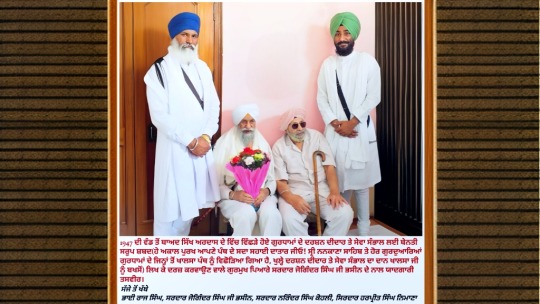
View On WordPress
#1947#ardas#gurmat#Gursikh satth media#harpreet singh#joginder singh bhasin#maryada#nimana#partition#Punjab#rehat#sgpc#sikhism#vichaar
0 notes
Text
Partition without Consent
[...] [T]he UN 1947 partition was not the legal, moral, fair, balanced, pragmatic, practicable "compromise" formula that it is made out to be. [...] The UNGA altogether failed to address the very serious legal challenges posed by the Arab delegations in the form of draft resolutions submitted to the UNGA meeting to discuss the Palestine problem. The Arab delegations requested that before a decision be taken, the International Court of Justice be asked for its opinion on the following subjects: (a) whether or not Palestine was included in the Arab territories that had been promised independence by Britain at the end of World War I; (b) whether partition was consistent with the objectives and provisions of the Mandate; (c) whether partition was consistent with the principles of the UN Charter; (d) whether its adoption and forcible execution were within the competence or jurisdiction of the UN; and (e) whether it lay within the power of any UN member or group of members to implement partition without the consent of the majority of the people living within the country. The voting on the issue of UN competence to partition Palestine—a combination of (d) and (e)—is particularly instructive. The draft counter resolution that said that the UN did have the authority was carried by only 21 votes to 20 in the Ad Hoc Committee whose total membership was 57.
Nor is there much evidence that moral considerations played a significant role in the pro-Zionist votes of the member states or that these were genuinely motivated to alleviate the plight of European Jewry. In the spirit of UNSCOP's [...] recommendation of international responsibility for the Jewish plight, the Arab delegations had proposed a draft resolution to the effect that "Jewish refugees and displaced persons . . . should be absorbed in the territories of members of the UN in proportion to their area, resources, per capita income, population, and other relevant factors." The resolution in the UNGA, again meeting as an ad hoc committee, was not carried. The voting was 16 to 16, with 25 abstentions. [...] Neither the UN as a whole nor the United States as its paramount leader rose to the moral occasion [of accepting refugees in significant numbers].
[...] [The] absence of consent [was] at the heart of the 1947 UNGA partition resolution. Ever since the Peel Report's recommendation of partition (itself much less radical than its UN successor) triggered a massive escalation in the Palestinian rebellion in 1937, there had been no illusions among the Zionist leadership or outside observers about the [...] dedicated Palestinian resistance to the principle of partition. [...] Nor were there any illusions among the Zionist leadership or any of the UN member states supporting partition that it could be implemented other than by the use of massive force in the face of Palestinian and Arab resistance. How else, in the absence of Palestinian and Arab consent, could the Zionist domain expand from 7 percent to 55.5 percent of the land of Palestine assigned to the Jewish state, a 900-percent increase in territory, thick with Palestinians?
– 1997. Walid Khalidi, "Revisiting the UNGA Partition Resolution," Journal of Palestine Studies 27.1, pp. 5-21.
29 notes
·
View notes
Text
Celebrating Indian Independence: Stories, Achievements, and Reflections
celebrating-indian-independence-stories_-achievements_-and-reflections
On the 15th of August each year, the nation of India comes alive with a spirited celebration that marks its hard-earned freedom from colonial rule. Indian Independence Day is a day of immense pride, unity, and remembrance of the sacrifices made by countless individuals in the pursuit of liberty. This blog delves into the…
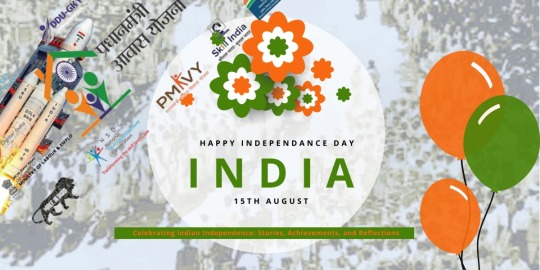
View On WordPress
#Contributions of Indian women#Cultural celebrations on Independence Day#Digital India transformation#Freedom fighters of India#Iconic Indian independence songs#Inclusive development initiatives#Independence Day celebrations#India&039;s post-independence achievements#India&039;s progress post-1947#Indian freedom struggle#Leaders of the independence movement#Modern India&039;s achievements#Partition of India stories#Patriotic folk performances#Resilience during partition#Socioeconomic progress since independence#Stories of marginalized leaders#talkstreetblog#Unity in diversity in India#Women empowerment in India
0 notes
Text
Digitised Archival Sources on India and South Asia
The days when only members of the upper class of urban society had access to knowledge-producing sites (mostly archives) are long gone. Today, one may easily access digitised archival sources thanks to the internet on mobile phones. The growth of digital technology has also enabled a new arena of history-keeping.
Publicly-owned digitised archival sources have gained popularity in recent years as…

View On WordPress
#1947 partition archive#abhilekh patal#archival sources on india#archives in india#asiatic society of mumbai#colonialism documents#digital archives#digital sources on south asia#digitised archival sources on india#granth sanjeevani#ideas of india#indian archives#internet archive#iqbal cyber library#LUMS archive#lums digital archive#national archives of India#nehru memorial museum and library#primary sources on India#rahul sagar#research and writing in India#south asia open archives
0 notes